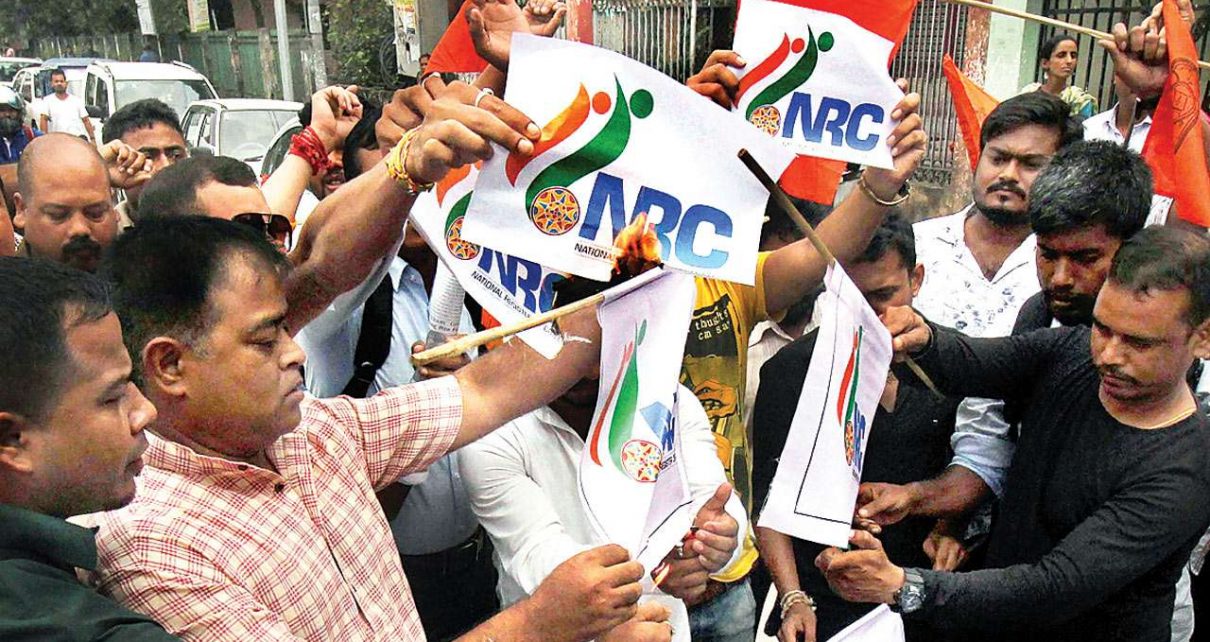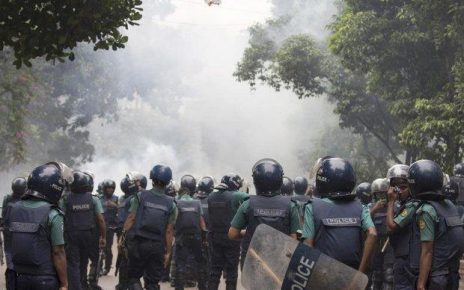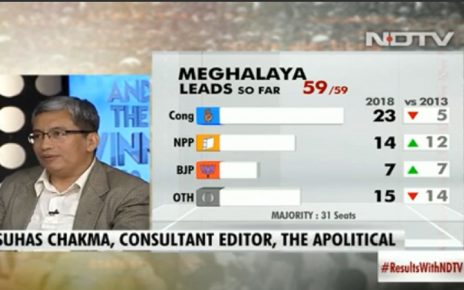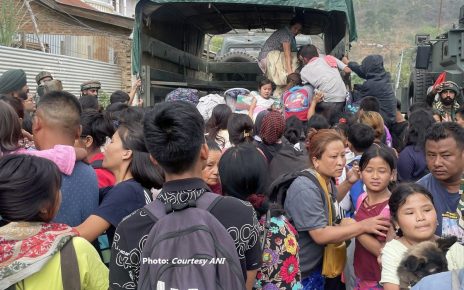The National Register of Citizens (NRC) of Assam published on August 31 has excluded over 19 lakh people. Though the details are yet unknown, about one lakh Nepalis, an equal number of Scheduled Tribes, who are the original inhabitants of Assam, and over 10 lakh Bengali Hindus have been excluded from the NRC. The remaining are expected to be Muslim minorities and other communities.
The anti-foreigner agitation in Assam had created the perception of massive influx of illegal immigrants from Bangladesh. However, what is lost in the narrative is the fact that the anti-foreigner agitation started in 1970s over the population explosion in Assam from 1901 to 1971. This rise was a consequence of heavy migration sponsored by the British in the tea plantations and in the agricultural sector. Don’t forget that out of Assam’s population of 33 million, the total number of tea garden residents is 6.5 million.
Hurting Indians without papers, DNA, Sep 3, 2019
By: Suhas Chakma, Director, Rights and Risk Analysis Group
Doublespeak cannot go too far. If the Hindu minorities have been fleeing from persecution in then East Pakistan and present Bangladesh, it is natural that the majority of those who would be identified as foreigners are Hindu Bengalis. The Foreigners Act of 1946 does not make any distinction based on religion.
Bhumiputras vs Bahiragatas is not new to the eastern part of the Indian subcontinent. The division of Bengal by Lord Curzon in 1905 forced Bengali Hindus, who were 33% of the population in East Bengal in 1901, to gradually migrate to West Bengal.
The ancestral roots of key literary, political and cultural icons of West Bengal — whether Rabindranath Tagore (Jessore), Jyoti Basu (Narayanganj), Roma Dasgupta aka Suchitra Sen (Pabna) are actually in East Bengal.
The Partition of India forced millions of Bengali Hindus to flee to the neighbouring Indian states, including undivided Assam and Tripura, leading to marginalisation of indigenous communities in these states, swamped by waves of refugees from the Partition and post-Partition period.
Once the anti-foreigner agitation was launched in Assam in the mid 1970s, it became a subject of great concern in the region, with indigenous people becoming fearful of being reduced to a minority.
This also shaped the national narrative on illegal immigrants, completely overlooking the fact that Assam had the lowest average decadal population growth rate of 20.90% from 1971 to 2011, which was lower than the national average of 21.94%, despite being the gateway to Northeast India, in addition to the region opening up to mainland India since 1971.
Considering the history, conflicts and governance in Assam, the NRC is not about finding a national or a foreigner, but punishing those who do not possess the necessary documents. An overwhelming majority of the 19 lakh excluded people are Indian citizens.
If the law is to take its own course under the Foreigners Act, those who cannot establish themselves as citizens shall have to be sent to prisons. To expect Bangladesh to take back even a thousand people is the height of juvenility. Sending about a million people into prisons is not something any civilised country governed by the rule of law, may do.
Having built on this false rhetoric, the BJP- led government has not offered any solution. Its proposed Citizenship Amendment Bill (CAB), 2016, effectively does not identify Hindus from Afghanistan, Pakistan and Bangladesh as illegal immigrants. It has also reduced the time for submitting citizenship applications to six from 11 years.
The CAB is incredulous. Assuming that the Bengali Hindus fled in their millions, none has sought refugee status or long-term visas and assumed to have become citizens of India. The government effectively proposes to make these Hindu Bengalis stateless first, and then make them stand in a queue for citizenship with the proof that they had entered India before December 31, 2014!
The experience of the Chakmas, who were settled in Arunachal Pradesh by the Government of India in 1964, is instructive. On January 9, 1996, the Supreme Court directed the processing of their citizenship applications, but a not a single one has been processed. On September 17, 2015, the Supreme Court once again directed that the processing of Chakma applications be started and conclusions submitted, preferably within three months. As on date, not a single application has been processed despite monitoring of the Supreme Court.
I have been told by many BJP leaders that granting citizenship to the Chakmas in Arunachal Pradesh is political suicide. Citizenship cannot be granted without the recommendation of the state government.
If the Bengali Hindus excluded from the NRC were to apply for citizenship, they shall be treated as expendable as the Chakmas of Arunachal Pradesh. Further, if religious persecution is the criteria, the Supreme Court may well consider the religious persecution of Ahmadiyyas and Rohingya.
The anti-Muslim immigrant rhetoric has turned effectively into an anti-Bengali Hindu rhetoric. The demand for the NRC in Delhi is surely not against Pakistanis, Nepalis or Sri Lankans. The attempt to identify negligible number of illegal Muslim immigrants shall end up hurting the Bengali Hindu minorities, who fled East Pakistan or Bangladesh.
Neither legal aid nor any attempt to manage the processes under the Foreigners Act is likely to resolve the NRC crisis. If India were to address the issue of illegal immigrants and refugees, it needs to prepare a population register based on current data, and use it for future reference, in addition to enacting a modern immigration and holistic refugee law.
Any attempt to identify foreigners based on requirement to provide admissible documents from 1951 or 1971 shall only end up hurting Indians without documents.
Author is director, Rights and Risk Analysis Group



